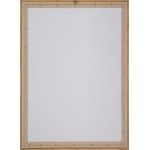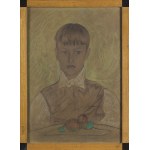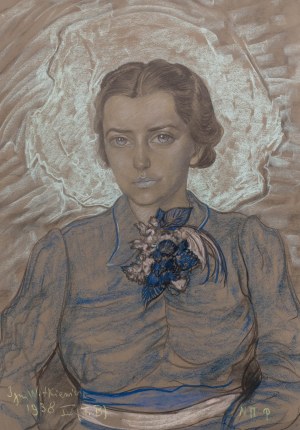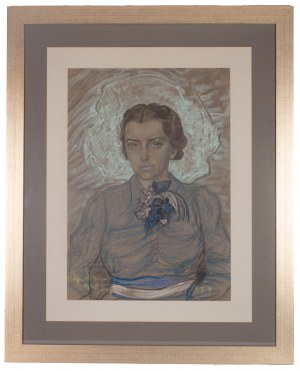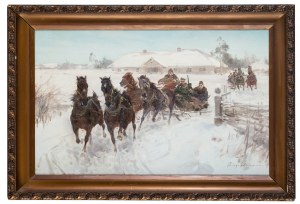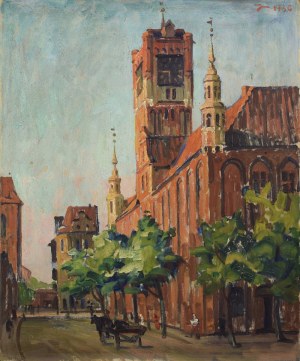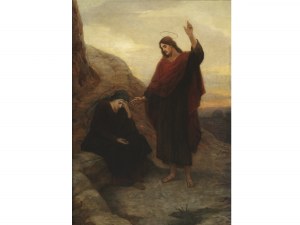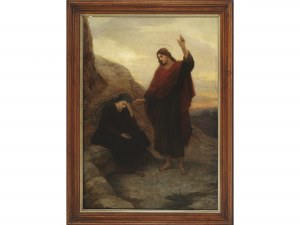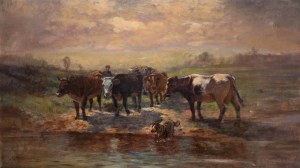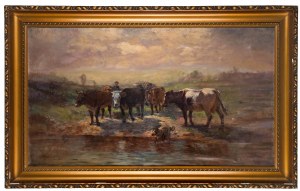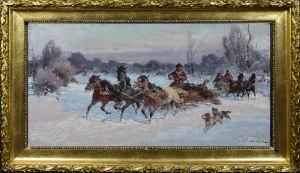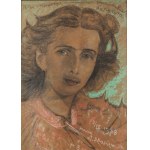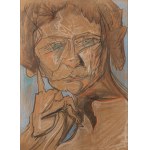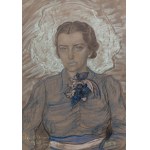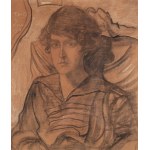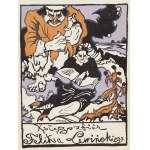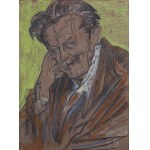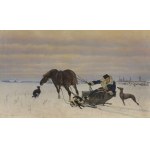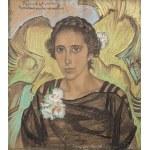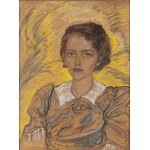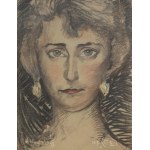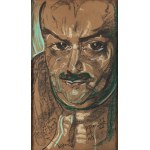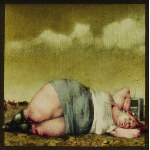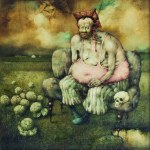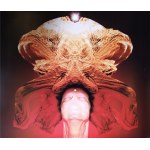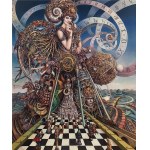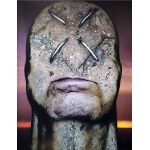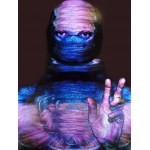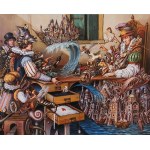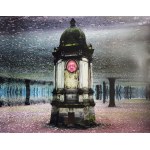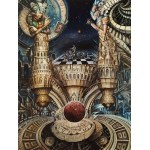68.5 x 48.0 cm - pastel, paper pastel, brown paper, 68.5 x 48 cm (light frame)
Signed l.d.: Ign Witkiewicz (T.B) NP NTI ; p.d.: coat of arms 1937 II
The painting is accompanied by an expert opinion of Dr. Anna Żakiewicz dated May 2023.
The Company's regulations provided for a special category of children's portraits that were a combination of types B and E, since, according to the artist, "due to the mobility of children, pure type B is mostly impossible" to produce. This is because it was "a characteristic type, but without a shadow of caricature (...) the attitude to the model objective". In practice, these were portraits resembling photos for documents, allowing to confirm the identity of the person. However, it happened that the portrayed child sat and posed calmly, without causing any trouble, so he deserved an "adult" type B.
Such was certainly the case with the boy portrayed in February 1937. He calmly looks straight at the viewer with a steady gaze of blue eyes. He is smoothly combed, his fringe neatly trimmed halfway down his forehead, dressed in a vertically striped white shirt with a collar lined over a beige sleeveless shirt - probably a diagonal check marked sketchily so as not to distract from the serious face of the little gentleman. The boy is seated behind a table on which there is a sketchily treated oblong platter with russet and bright green balls - fruits. This prop is characteristic of the children's images made by Witkacy. The artist often promised the portrayed children that they would receive the contents of the platter as a reward for their polite posing.
The signature - an abbreviation of the second name and the full name - indicates that the portrait was an official work of the Company, as the artist generally used the artistic pseudonym Witkacy on less formal images made for friends and close acquaintances. Honoraria for Type B were in the 1920s. 250 zlotys, the equivalent of a decent monthly salary; in the 1930s, due to the economic crisis, the artist had to lower this amount and made portraits for 50 zlotys, and sometimes even cheaper. Additional annotations on the portrait inform about not smoking cigarettes (NP) and not drinking alcohol (NTI). The abbreviation "crest" is, of course, tea, which Witkacy considered a strengthening drink and nourished himself with it when tired.
In February 1937 the artist was in Warsaw, where he stayed in the apartment of his wife Jadwiga at 23 Bracka St. At that time the artist was absorbed in his philosophical work, writing a large text analyzing the views of the British philosopher and mathematician Alfred Whitehead. He made relatively few portraits, just enough to meet his current financial obligations. In fact, their author's interests of the time are evident in them - the faces of the models are generally serious, carefully worked out, and the enlarged eyes look at the viewer with a fixed, as if glassy gaze, giving the impression of beings absorbed in timeless problems.
The previously unknown portrait of a serious boy is the only work by the artist created in February 1937, and as such it fills a gap in our knowledge of Stanislaw Ignacy Witkiewicz.
Following the expert opinion of Dr. Anna Żakiewicz
Stanisław Ignacy Witkiewicz (Warsaw 1885 - Jeziory in Volhynia 1939) was educated at home under his father, Stanisław Witkiewicz. In 1903 he passed his high school diploma in Lviv. In 1904 he began traveling, including to Vienna, Italy, Munich, Paris and London. From 1904 to 1910 he studied at the Academy of Fine Arts in Cracow with Prof. Jozef Mehoffer, interrupted by periods of study with Władysław Ślewiński. In 1914 he left with Bronislaw Malinowski's expedition to Australia, and from there went directly to St. Petersburg, where he enlisted in the Russian army after the outbreak of WWI. In Russia, he witnessed the Bolshevik Revolution.
After returning to the country in 1918, he became a member of the "Formists" group, with which he exhibited from 1918 to 1922. In the painting of this period, he came closest to putting into practice his own theory of Pure Form, formulated during the war (it also applied to drama). Along with Leon Chwistek, he was the main theoretician of the grouping. After 1924, he operated as a one-man "S. I. Witkiewicz Portrait Company'' making portraits on commission. At the same time, he continued his literary (dramas, novels) and philosophical work, but above all he practiced the "art of living" that united all forms of his activity, appreciated only at the end of the 20th century. He committed suicide at the beginning of World War II, the day after the Soviet aggression against Poland.
Recently viewed
Please log in to see lots list
Favourites
Please log in to see lots list




